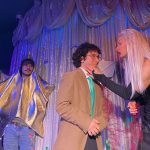 ItÔÇÖs estimated that around 630,000 people in the UK are asexual. But what does this mean? Is it linked to the asexual reproduction of microscopic amoebas that split in half to create new amoebas? IÔÇÖm afraid the answer to that is no. Asexuality is frequently misunderstood so knowing more about asexuality and its increasing visibility will enable us all to better understand relationships in our society and the people we meet.
ItÔÇÖs estimated that around 630,000 people in the UK are asexual. But what does this mean? Is it linked to the asexual reproduction of microscopic amoebas that split in half to create new amoebas? IÔÇÖm afraid the answer to that is no. Asexuality is frequently misunderstood so knowing more about asexuality and its increasing visibility will enable us all to better understand relationships in our society and the people we meet.
So first of all, what is asexuality? Asexuality is a sexual orientation. An asexual person is a person who does not experience sexual attraction. Like all sexual orientations, asexuality exists on a spectrum, and other people under the asexual umbrella include demisexuals who only experience sexual attraction after forming a strong emotional bond with someone, and grey-asexuals who only experience sexual attraction rarely. In terms of romantic attraction, some asexuals are aromantic which means they do not experience romantic attraction and seek non-romantic companionship instead. However many people who are asexual do feel romantic attraction and seek romantic relationships. This means an asexual can have any romantic orientation and be hetero-romantic if they are romantically attracted to people of the opposite gender, homo-romantic if they are romantically attracted to people of the same gender and so on.
There are a variety of myths surrounding asexuality which need to be challenged. As we have already established, being asexual doesnÔÇÖt mean you donÔÇÖt want relationships or canÔÇÖt fall in love, because in the same way sex can exist without love, love can exist without sex. Secondly asexuality is very different to celibacy which is a conscious choice not to engage in sexual activity, asexuality like all orientations is not a choice and is an absence of sexual attraction towards people. Some asexuals may have a physical relationship with their partner but itÔÇÖs very important for each partner to be sensitive about each otherÔÇÖs feelings on the issue. Upon revealing their sexual orientation, asexuals are often told that itÔÇÖs just a phase theyÔÇÖre going through even though they may have considered themselves asexual for many years. They may be asked inappropriate questions about how they relate to sex and in an over sexualised society, asexuals may feel out of place.
In recent years asexuality has been attracting more and more attention within academic circles and in wider society. As long ago as 1948 Dr Alfred Kinsey who created a scale to measure sexuality from 0 for exclusively heterosexual to 6 for exclusively homosexual also included an X on the spectrum for those individuals who did not experience sexual attraction. A 1994 UK study put asexual prevalence at 1% of the population and new studies continue to be funded.
In more recent years the rate of progress has increased. The American asexual activist David Jay set up the Asexual Visibility and Education Network (AVEN) website in 2001, which now has over 70,000 users. In 2009 AVEN inspired sections in pride parades started to appear in the US and UK and now more widely. In popular culture, many also consider Sheldon from The Big Bang Theory and Sherlock to be Ace (asexual nickname). The 2011 documentary, (A)sexual chronicled and examined the ace communityÔÇÖs growth. In 2013 the Huffington Post published a prominent six part series of articles on the ace community and every October Asexual Awareness Week is held internationally. Asexuality has legal protection in the US states of New York and Vermont, and the UK government recognised it in their 2012 action plan for reducing hate crime.
Asexuality has yet to fully break into the public consciousness, although the increased media attention, academic interest and visibility of the community suggests real progress is being achieved. As we move forward, comprehensive sex education that recognises the broad nature of sexuality, tackling bullying to make our schools and work places safer and comprehensive education for healthcare professionals as well as shared campaigning with the rest of the LGBT+ community for acceptance should help Asexuality to find its place as a widely recognised and unremarkable orientation in our society.
Here at Cardiff University the LGBT+ Society and the LGBT+ Association recognise asexuality as a vital part of the + and ace students as valued members of our community. During February which is LGBT+ history month the Association will ensure asexuality is part of our efforts to raise awareness on campus, and hopefully this article has gone some way to raising that awareness.
Jake Smith








Add Comment